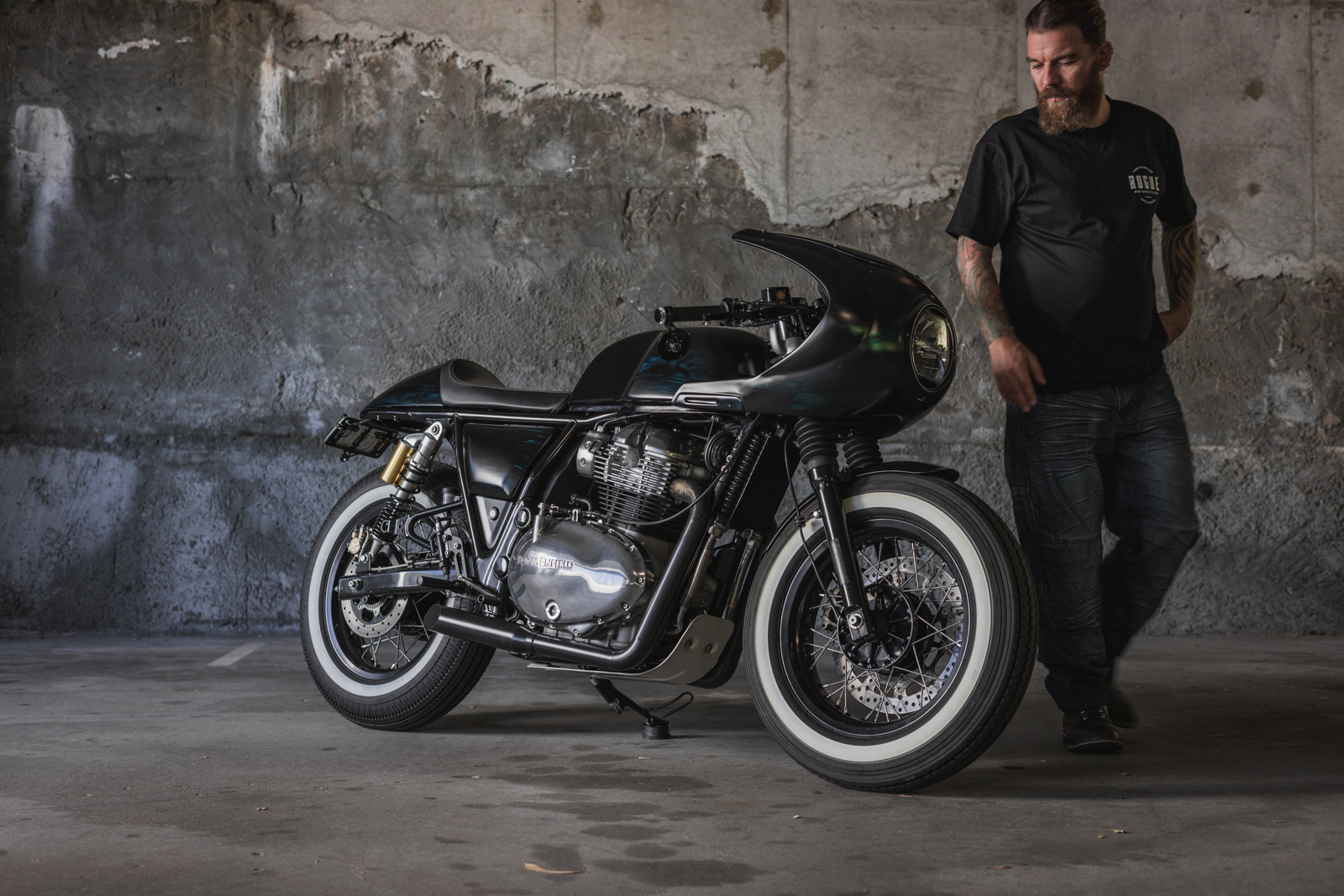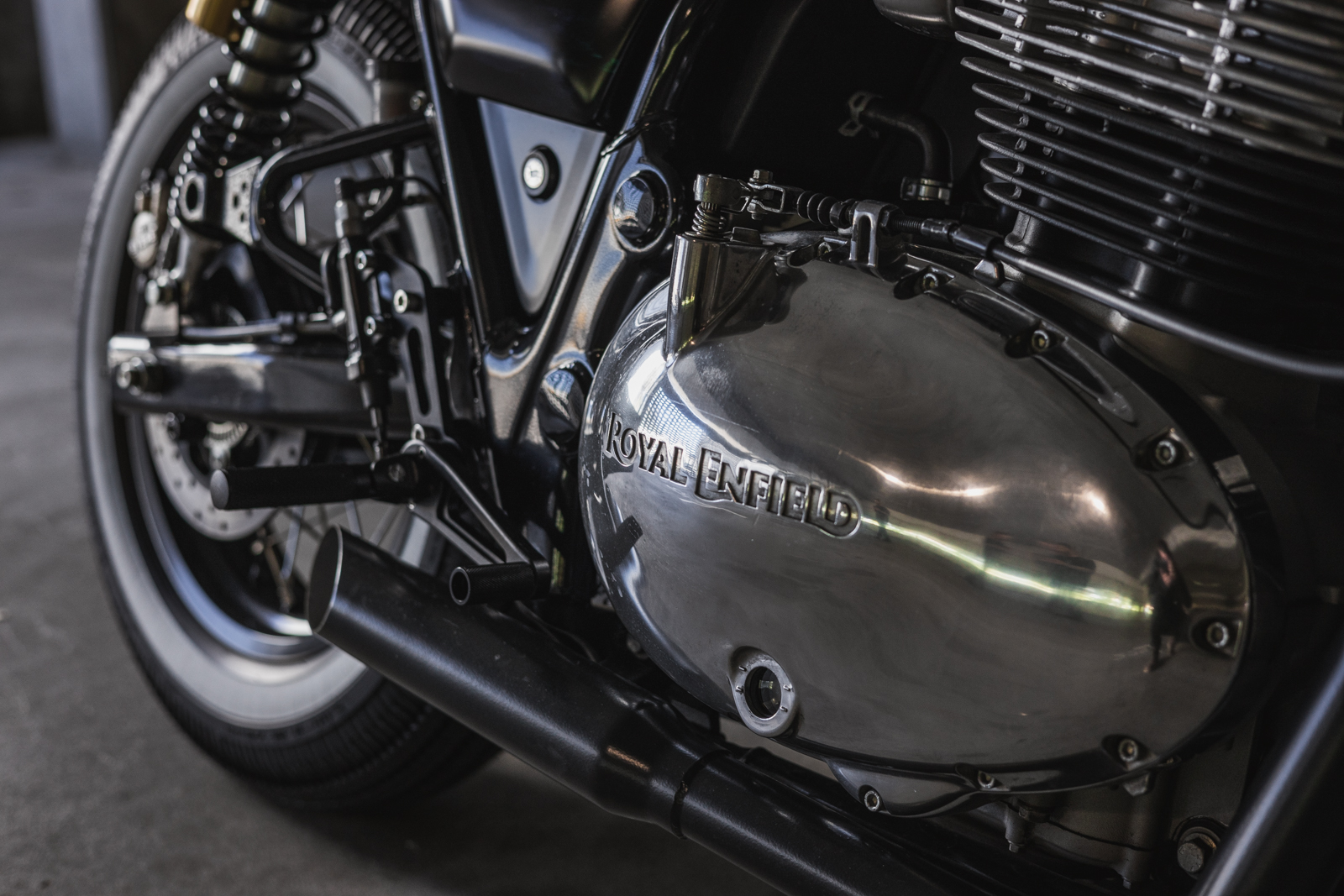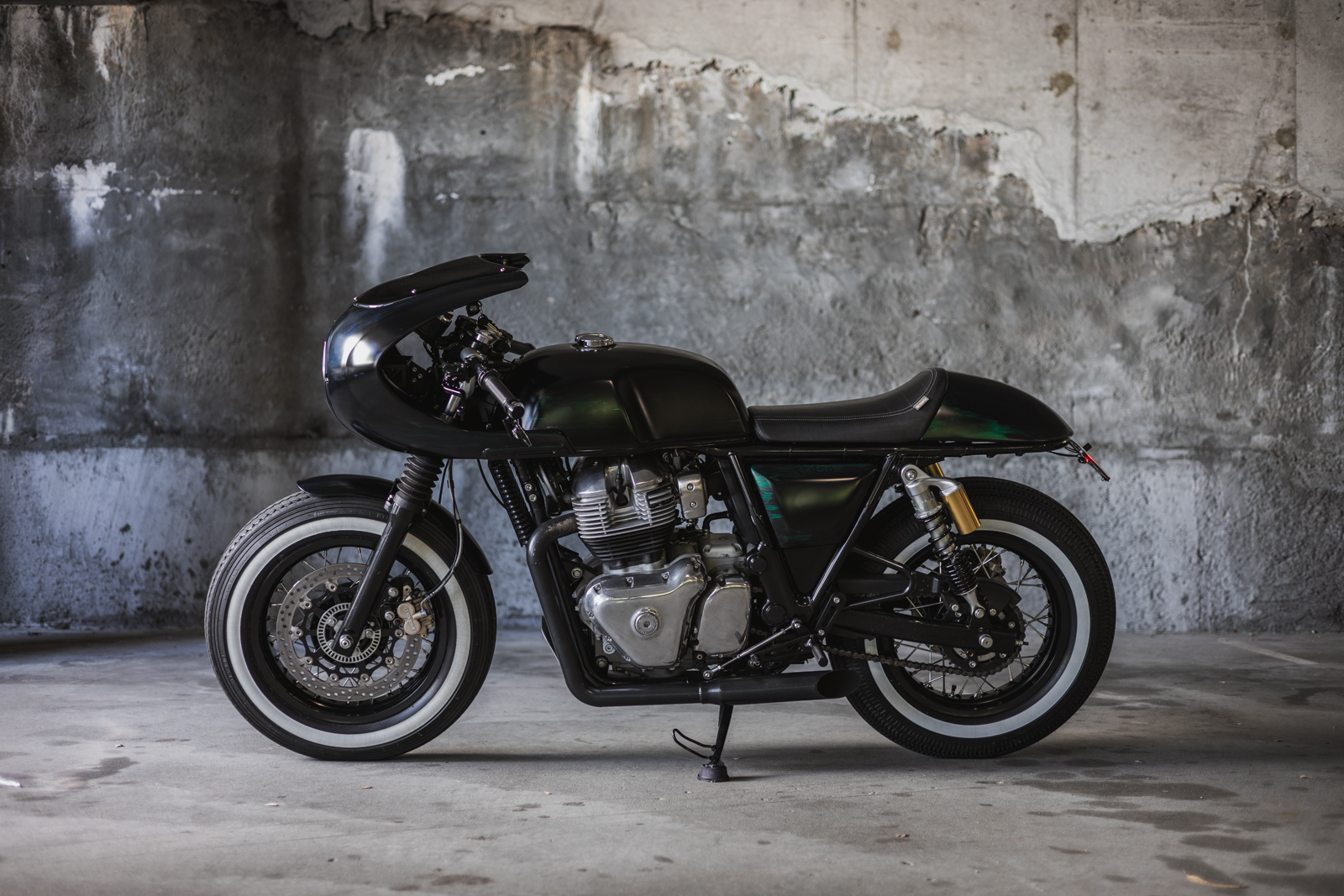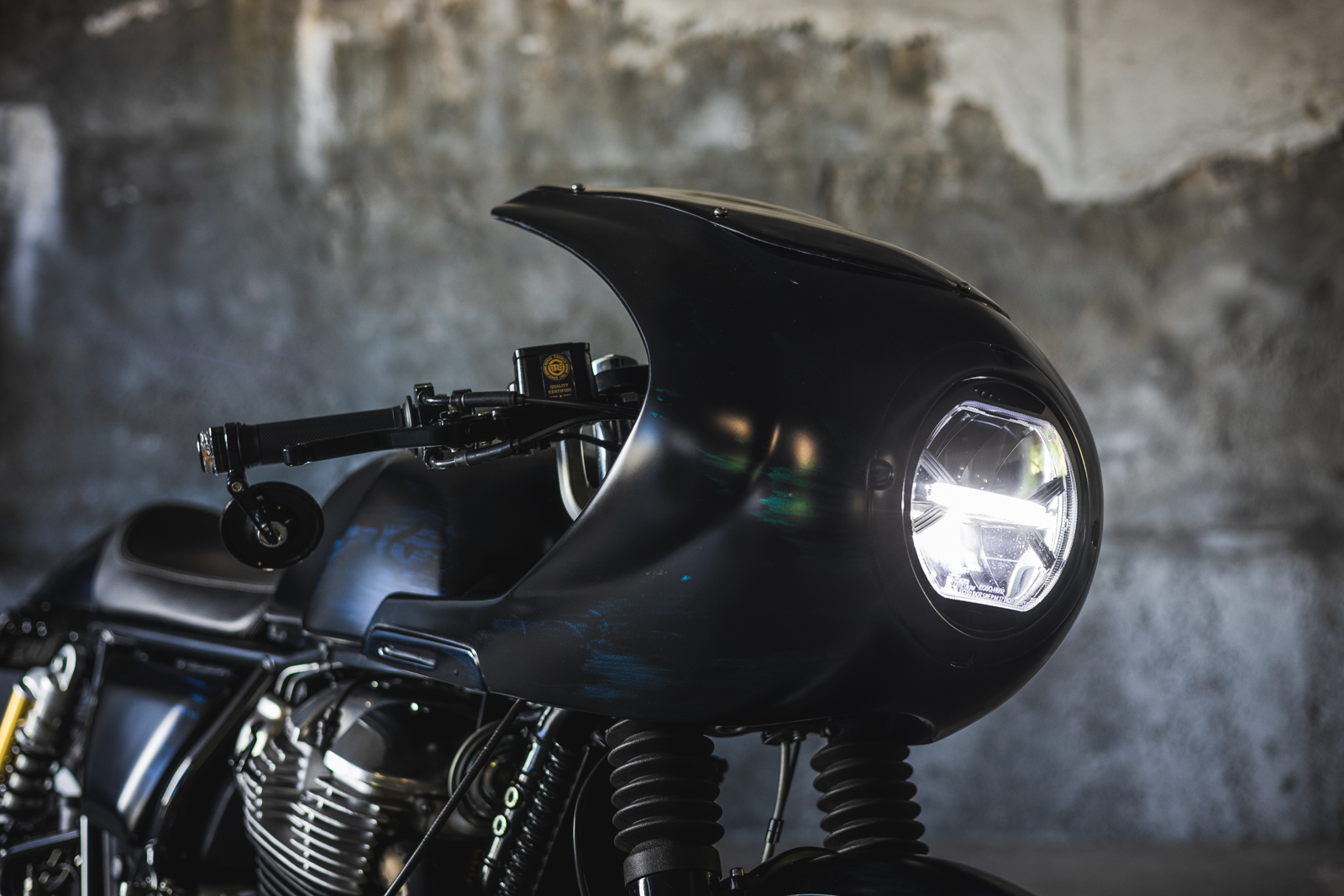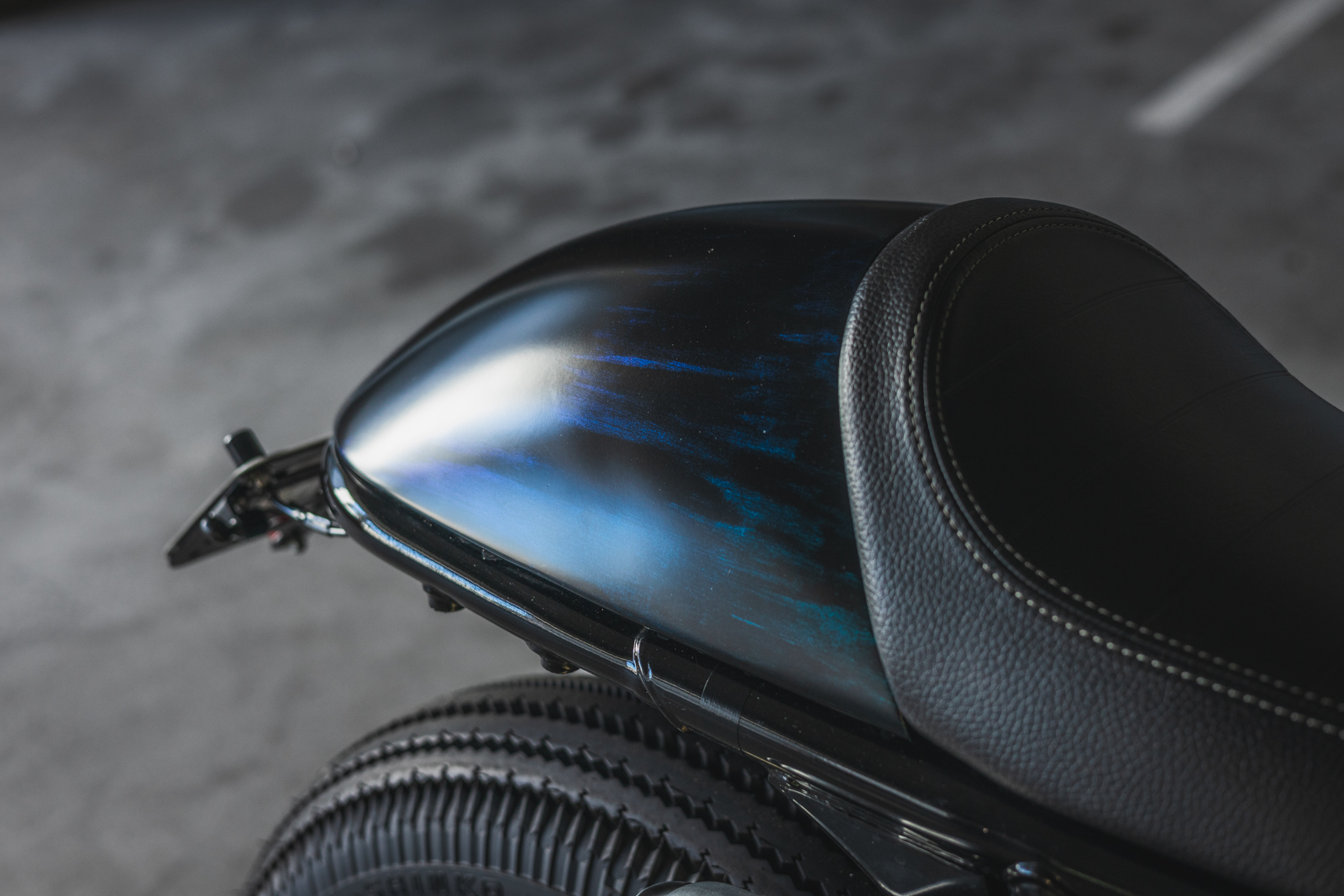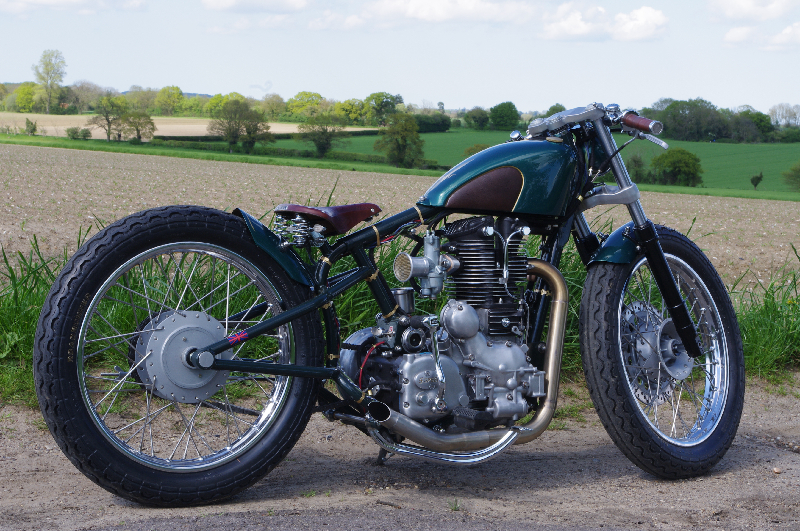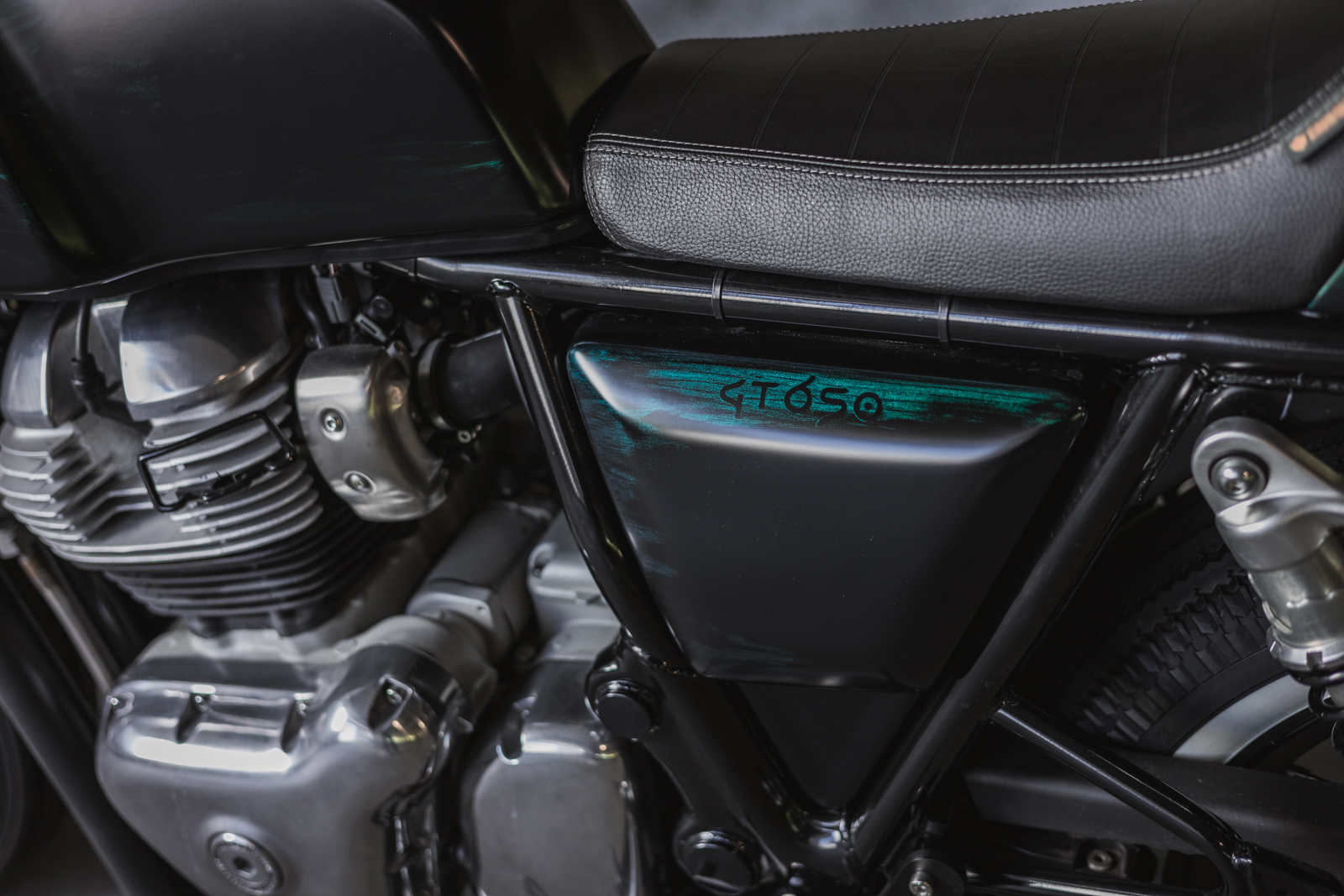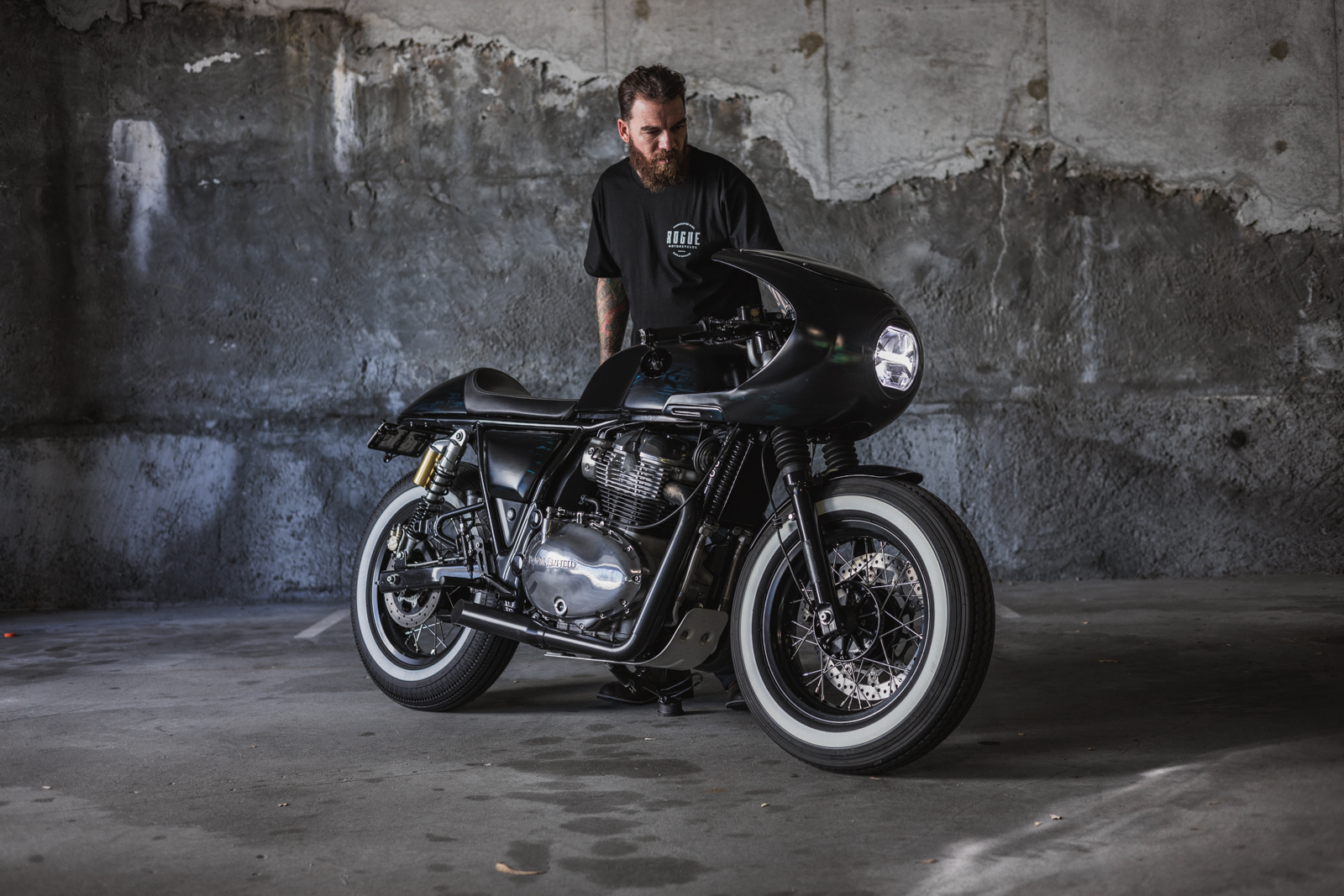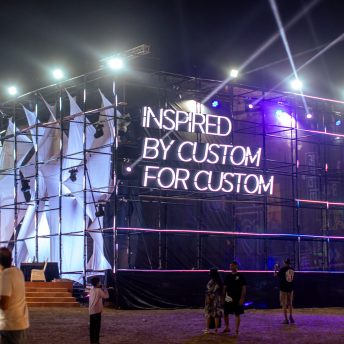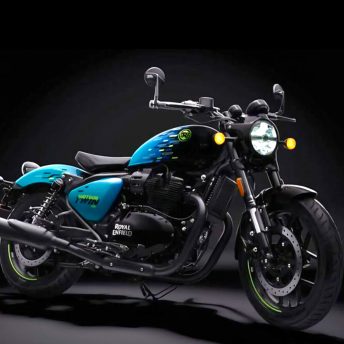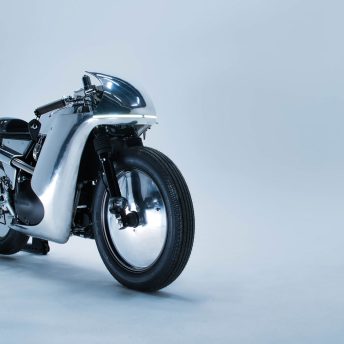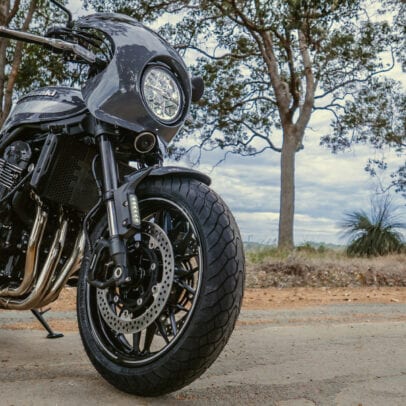I have a bit of a soft spot for the Royal Enfield 650 twins. This is evident whenever anyone asks me what classically styled motorcycle they should look at buying.
Most of the time, I just tell them to go ride an Enfield 650 and see what they think. Hell, one time I convinced a mate to buy one in the time it took us to quaff our lattes. We went straight to the local dealership, he took one for a ride and bought one on the spot. Royal Enfield, if you’re reading this, you’re welcome.
The Enfield twins present stunning value for money. A 650cc parallel twin with a slip assist clutch, good tyres, great style and all for close to $10,000AUD. It’s no wonder they practically fly out dealership doors.
Andy Duff from Perth, Western Australia, feels the same way I do about the RE650s. When I asked Duff why he chose the Royal Enfield Continental GT650, this was his reply…
“I bought it after my previous bike got stolen. I tested out a bunch of different bikes including the Triumph Street Cup, Thruxton R, Moto Guzzi V7, BMW R nine T Racer, etc. The Enfield had the best ride, sound and feel that put a smile on my face, and it was at a very good price point. The low price also enabled me to do the modifications. Had I bought a Thruxton R, for example, I doubt I’d have made so many changes.”
Duff rode the stock bike around for a while and then decided to make the changes you see here. To give the Enfield a little more pep, he paid a visit to Justin at Pro Twin in Wangara, just north of the Perth CBD.
Justin fitted a Power Commander and sent Duff back down the freeway to Billy and the team at Rogue Motorcycles in West Perth. Yes, Duff did get there faster thanks to the wake-up call the engine received from the Power Commander.
Inside the Rogue workshop, the wheels were promptly removed for treatment. For a more aggressive look, the factory hubs were laced to new 16-inch wheel rims. The front is shod with a 3.5-inch Shinko Classic whitewall and the rear wears a chunky, 5-inch 270 Super Classic whitewall, also from Shinko.
The front guard is the stock item from the factory, and the fork gaiters and engine protection plate are from Royal Enfield’s factory accessory line. With the much wider, taller front tyre, the guard was raised to get the necessary clearance.
The focus point of the build is the front fairing from the Indian company Autologue Design. Autologue Design specialises in bolt-on body kits, and their Reck range of Royal Enfield fairings are good looking and affordable. The Reck fairing kit comes unpainted with all the mounting bracketry you’ll need.
With the fairing mocked up in the Rogue workshop and the wheels back on, Billy fabricated a big-bore exhaust, complete with slash-cut mufflers. While this Enfield flies under the radar in the looks department, heads still turn because this thing is loud.
While the aural requirements of the Australian Design Rules may have been neglected, the visual requirements were not. The fairing houses a Koso LED headlight that Billy massaged into place, and the clip-on handlebars are adorned with Motogadget mo.blaze disc LED indicators.
Speaking of Motogadget, mo.view Spy mirrors accompany the indicators and Motogadget mo.switch mini’s take care of the controls. Everything runs smoothly through an m-Unit that Billy installed under the seat. Duff installed a set of adjustable levers from Hitchcock Motorcycles in the UK to round out the cockpit area.
The seat cowl was beaten from a sheet of aluminium by the hand of Clive Ross at The Hammer Works in Rockingham. Billy shortened the subframe to match the new cowling and it lines up perfectly.
The seat itself is from the Enfield factory catalogue. Lighting duties out back are sorted with a pair of Kellermann Atto DF indicators, which also pull triple duty as the brake and tail lights. Hard to believe such a microscopic lens can produce such a huge amount of light, but they do.
Billy fitted all of the rear lighting to a tail tidy that he welded onto the new subframe loop, and it cleans up the rear of the bike nicely. For a sportier riding position, a set of TEC rearseat footpegs were adapted by Rogue to fit the frame.
With the modifications complete, all the bodywork was sent off to Simon at Motorcycle Panel and Paint in Malaga, in Perth’s north. Duff took inspiration from a friend’s road bike (the non-powered type, that is) and Simon took it from there.
In the shade and at night the bike appears matte black. Add a bit of sunlight and the genius of the paint job shines through. Pearlescent accents shift and change from green to teal, to blue as you move around the bike.
When I asked Duff what his favourite part of the build was, he replied: “My favourite part has to be the paint job. It came out perfect. It catches your eye and draws you in.”
Duff and Rogue have highlighted just how easy it is to transform your Royal Enfield into the ideal cafe racer. They’ve brought the genre back to its roots by making the bike simpler and faster on a budget. It’s bikes like this that further cement my opinion that the Royal Enfield 650s are some of the best classically-styled motorcycles available today.
All photos by Ben Pilatti from @regularmoto.
